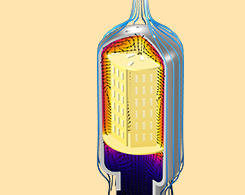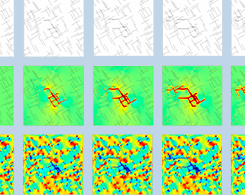Fluid & Heat Blog Posts

Modeling Emissivity in Radiative Heat Transfer
In Part 1 of a blog series on modeling radiative heat transfer, we discuss the concept of surface emissivity.

How to Compute the Projected Area of a CAD File in COMSOL®
Learn about three approaches to computing the projected area of a CAD file and when to use each one.

Modeling the Permeability of Composite Reinforcement Materials
Here, we go over how to model the permeability constant of an idealized composite reinforcement material.

Why Do Golf Balls Have Dimples?
Why do golf balls have dimples? Can I model a golf ball with COMSOL Multiphysics? Can I use simulation to optimize my shot and make a par? Find answers to these questions and more…

Simulating the Pressure in an Ultrahigh Vacuum System
The ETpathfinder research facility in the Netherlands was built in anticipation of the proposed Einstein Telescope (ET), a third-generation observatory of gravitational waves.

Analyzing LED Bulb Designs with Heat Transfer Simulation
LED bulbs are billed as more energy efficient than traditional bulbs, but they are not 100% efficient in turning electricity into light, making thermal management a vital design consideration.

Fully Coupled Hydromechanical Modeling of Fractured Media
Dr. Qinghua Lei of ETH Zürich demonstrates a novel method for modeling fully coupled hydromechanical processes in fractured media with 2 examples: fluid injection and underground excavation.

Fine-Tuning an HVAC System Design with Simulation
Do you find your office too hot, too cold, or just right? Using simulation, HVAC system engineers can assess indoor climate conditions and ensure maximum comfort among a building’s occupants.
